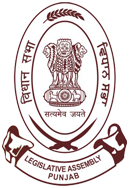After Independence And The Eventual Partition Of India In 1947, The Punjab Province Of British India Was Divided Between India And Pakistan. The Indian Punjab Was Further Divided In 1966 With The Formation Of The New States Of Haryana And Himachal Pradesh Alongside The Current State Of Punjab. On 1St November 1966, The Hindi-Speaking Southern Half Of Punjab Became A Separate State Of Haryana, And The Pahari Speaking Hilly Areas In North East Were Given To Himachal Pradesh. Chandigarh Was On The Border Between The Two States And Became A Separate Union Territory But Serves As The Capital Of Both Punjab And Haryana.
The Punjab Legislative Assembly Came Into Being Under The Constitution Consequent Upon The First Elections In 1952. Initially The Punjab State Legislature Was A Bicameral House. The Upper House I.E. Legislative Council Of Punjab Was Abolished On 1St January 1970 And As A Result, The Legislature Of Punjab Was Transformed Into Unicameral Legislature. Ever Since, The Number Of Members In Vidhan Sabha Has Been Varying From Time To Time. Upon Reorganization In 1966, The Number Of Members Was Reduced To 87 From 154 But It Again Rose To 104 After The General Elections Of 1967. At Present, The Assembly Consists Of 117 Members.
The State Has 23 Districts, 22 Cities And 157 Towns With 13 Municipal Corporations, 98 Municipal Councils (Class I - 24, Class II - 46, Class III - 28) And 57 Nagar Panchayats. Total Population Of Punjab Is 2,77,43,388 Out Of Which 1,46,39,465 Are Males And 1,31,03,873 Are Females. There Are 1.84 Crore Electors In The State.

